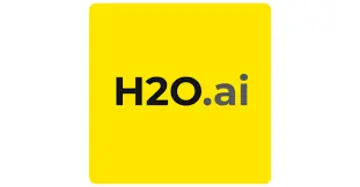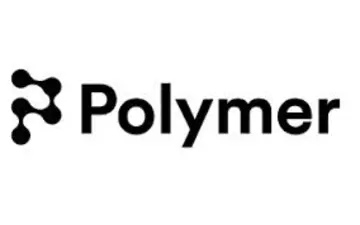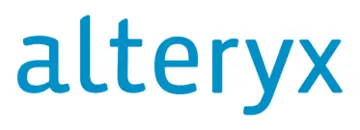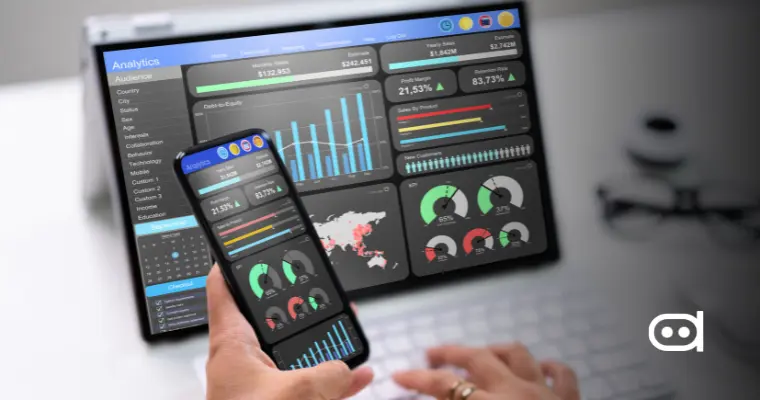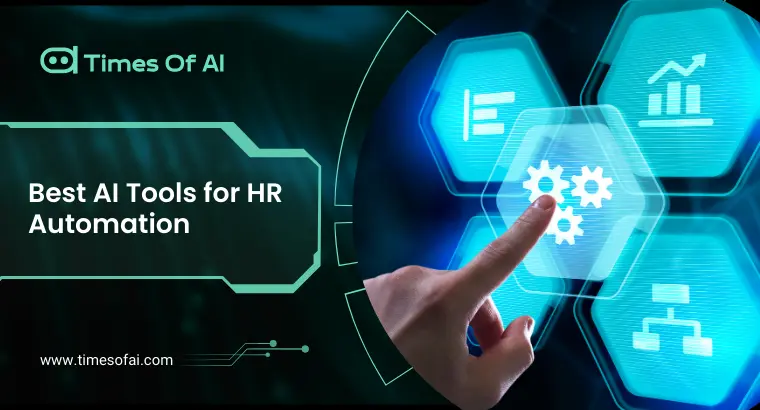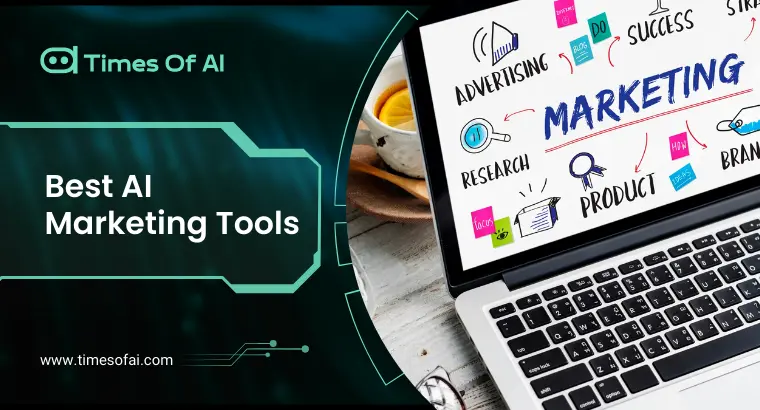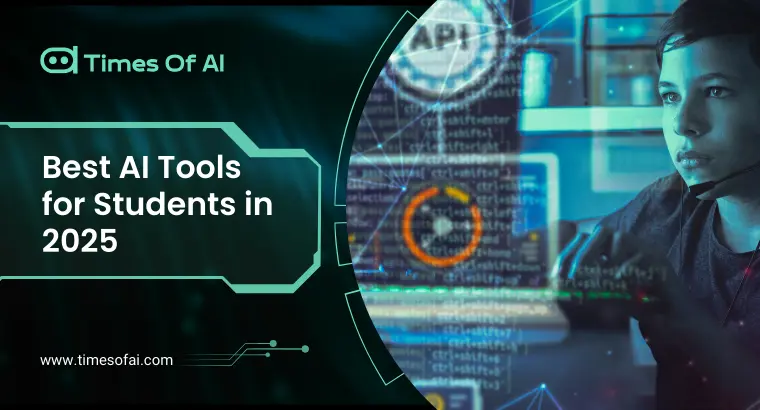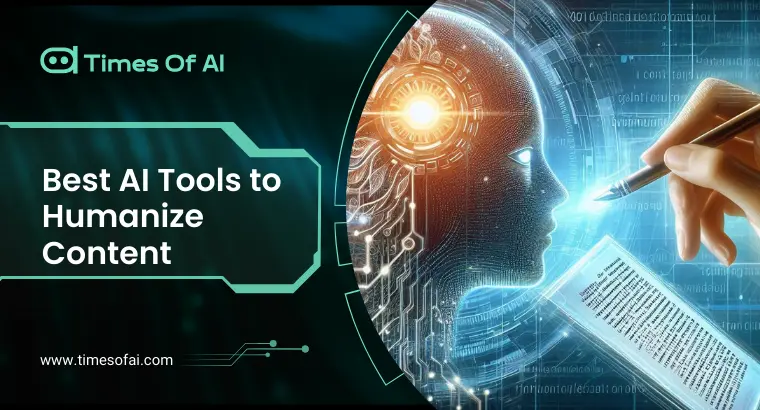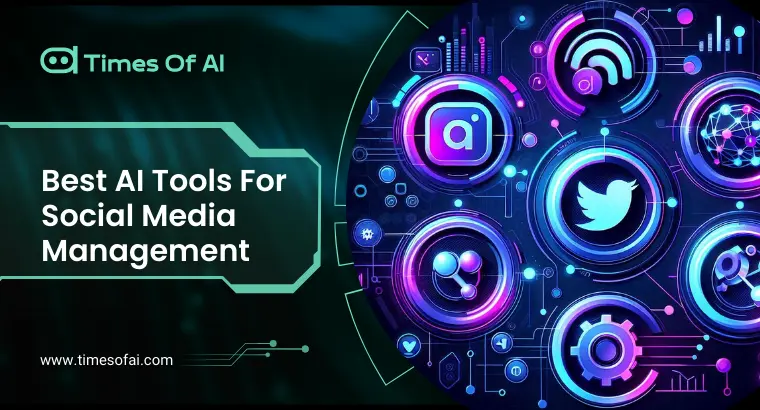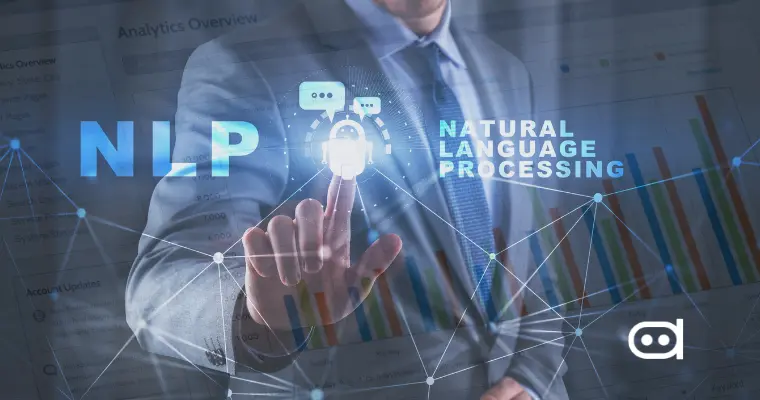
5 Best AI Data Analytics Tools for Data Analysis in 2025: Simplify Complex Data
Artificial intelligence enables efficient sorting and configuration of massive and complex datasets using algorithms and machine learning models. These tools provide businesses with speedy as well as accurate analysis of data for future decision-making, reshaping the future of analytics and business opportunities. The article reviews various AI data analytics tools, highlighting their features, functionalities, and benefits. Each of these tools helps to simplify complicated analyses while improving accuracy and speed in the decision-making process. The article looks at tools that encompass features like predictive analytics and real-time processing, visualization capabilities, and cross-platform integrations to meet the varying needs of the organization.
Key Takeaways
- Discover the 5 best AI tools for data analytics suitable for working with very complex data sets and bringing in actionable insights.
- Understand how the tools feature a streamlined workflow with their advanced features. Find out why your organization should invest in these types of AI data analytic tools.
- Learn about AI solutions that enable scalable, efficient, and smarter data management.
Best AI Data Analysis Tools Explained
| Tools | Best For | Prices | Platform Compatibility |
|---|---|---|---|
| H2O.ai | Businesses looking for an end-to-end open-source platform for generative AI and predictive AI capabilities | Contact for pricing | Windows, macOS, Linux |
| Polymer | Turns your data into fully customizable dashboards and slide-based presentations | Starter: $25/MO, Pro: $50/MO, Teams: $125/MO |
Desktop App for Mac, Windows (PC), Linux |
| Medallia | Customer experience management | Contact for pricing | Web-based |
| Alteryx | It allows users to easily clean, transform, and analyze large datasets from different sources without needing coding | Designer Cloud: Starting at $4,950, Designer Desktop: $5,195 |
Windows, macOS |
| KNIME | Data wrangling, analysis, and visualization | Basic: $39,900 Yearly, Standard: $71,250 Yearly, Team plan: $99 Monthly | Windows, macOS, Linux |
Let's explore the top 5 AI data analysis tools in detail:
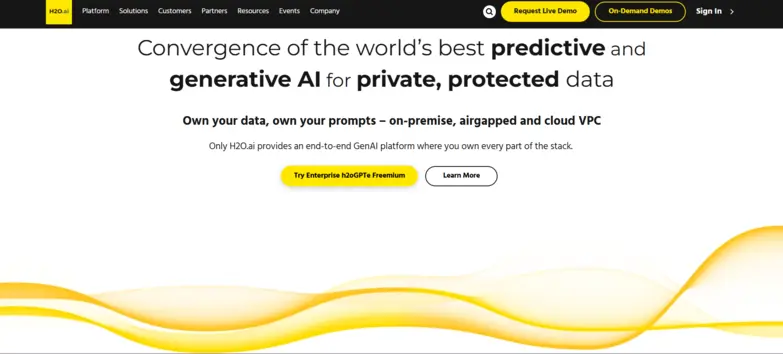
Introduction
H2O.ai is a leading AI data analysis company dedicated to democratizing AI and leading a global open AI movement. The company specializes in extracting insights from all kinds of structured and unstructured data, like video and documents, using award-winning products such as Hydrogen Torch and Document AI. Customers leverage the H2O AI Cloud to quickly solve challenging business problems and fast-track their discovery of new ideas. More than 20,000 organizations, millions of data scientists, and over half of the Fortune 500 trust H2O.ai to be their leading AI provider. As part of its offering for enterprise customers, H2O.ai has several platforms for AI and machine learning: the open-source distributed machine learning platform H2O-3, the automatic machine learning platform H2O Driverless AI, and the brand new H2O Q, an AI-powered platform for business users.
Key Feature
- Open Source: H2O.ai is a free, open-source platform that promotes access transparency and free exploration space for advanced machine learning.
- AutoML: Fully automating the machine learning process, from preparation of data to deployment, saves time on feature engineering and hyperparameter tuning, finally yielding the best-performing machine learning models effortlessly.
- Scalability and Performance: Spark and Hadoop enable all the capabilities of distributed computing, making it easy to handle large datasets and complex computations. Scalability options meet every project size.
- Versatile Integrations: Python, R, Scala, and Java connect and integrate with SQL, cloud storage, and Big Data tools, allowing seamless integration into the current workflow.
- Strong Model Interpretability: The utilization of variable importance scores and SHAP values, for instance, facilitates regulatory compliance and increases transparency in securities.
- Continuous Learning: Supports model retraining and hyperparameter tuning for ongoing optimiz
Pros & Cons
- Open-source and end-to-end
- Efficient handling of large datasets
- Supports generative AI and predictive AI
- Cloud or on-premises deployment
- Strong community support
- Offers flexibility
- Users may find it complex to set up and use
- Users need to have experience in machine learning
Pricing
Contact for pricing
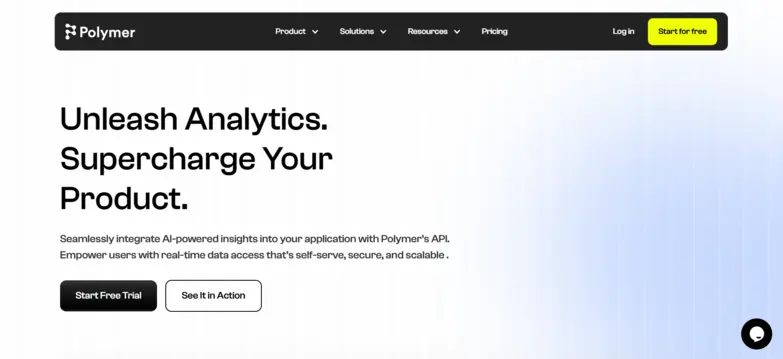
Introduction
Polymer develops robust AI tools for data analysts, facilitating the integration of data visualization and reporting. It allows the average user to design an easy dashboard without requiring strong technical capabilities in data analysis. An intuitive interface allows you to merge elements such as Shopify, Google Analytics, or Facebook Ads into a perfect database for real-time insight. The platform allows users to produce their own dashboard and insights. Greatly facilitated for e-commerce, marketing, and businesses, Polymer translates complicated data into easy-to-understand text. Polymer also offers adaptability to align with all business goals, leveraging its flexibility to make analytics useful in other applications. Whether you are an analyst or just a beginner, Polymer will have everything you need to turn data into actionable insights. It simplifies the entire data management and visualization process, letting users concentrate on deriving insights to propel their business strategies ahead.
Key Feature
- Dashboards generated by AI: Polymer employs artificial intelligence to build insightful dashboards automatically. Thus, users can gain quick insights without needing much knowledge and skills in analyzing data for an easier and more efficient understanding of information.
- Embedded Analytics: The platform seamlessly integrates powerful analytics into other applications, providing businesses with data insights that do not get lost within their existing tools, thereby enhancing productivity and engagement.
- Seamless Data Integration: Polymer allows effortless integration with other popular data services such as Shopify, Google Analytics, and Facebook Ads. This simplifies the process of collecting and syncing data from multiple sources into a single analytics view.
- A user-friendly interface: Polymer’s focus on accessibility means that its interface is user-friendly for anyone, from beginners to veterans, without a steep learning curve.
- Conversational AI Interactions: Polymer’s unique feature allows users to communicate with their dashboards using natural language.
Pros & Cons
- Quick and real-time insights
- Even non-technical users can easily use it
- Offers customizable dashboards
- Engaging in conversational AI interactions
- Not the best fit for advanced data analytics
- Limited integrations and customization options
- Can have a complex initial setup
- Needs internet access for use
Pricing
- Starter: $25/MO
- Pro: $50/MO
- Teams: $125/MO

Introduction
Founded in 2001 and with headquarters in Pleasanton, CA, Medallia offers a complete SaaS solution in customer and employee experience management. As an experienced management-building company, Medallia utilizes artificial intelligence to interpret customer and employee feedback and take appropriate actions. Medallia’s primary product, the Medallia Experience Cloud, utilizes AI/ML to generate actionable insights for both customers and employees, thereby fostering intelligent decision-making within organizations. The organization helps clients analyze consumer and employee journeys, anticipate needs, predict behavior, and improve outcomes. The key elements of MEC comprise unified omnichannel feedback collection within a single platform, unstructured data analysis, predictive and action-oriented analytics, real-time as well personalized reporting, risk scoring, and self-service. Medallia builds digital and experience orchestration, a unified technology layer that acquires knowledge, comprehends data, and manages customer journeys and dialogues. Medallia also offers BI, Social Listening, and Contact Center.
Key Feature
- Experience Data Analysis: Utilizes AI to analyze feedback from customers and employees via various sources.
- Sentiment Analysis: Employs natural language processing (NLP) to infer emotions from speech and text.
- Real-Time Feedback: Captures and processes comments as they are still being made, allowing immediate action.
- Predictive Analytics: Provides an outlook of the future and advice on trends.
- Multi-Channel Integration: Aggregates data from surveys, social media, call centers, and other data sources.
Pros & Cons
- Provides accurate sentiment analysis
- Offers strong data security and compliance
- Allow clients to quickly and effortlessly rate your business.
- Great customer support for users
- Navigations may be complex for newbies
- May be costly for small businesses
Pricing
Contact for pricing
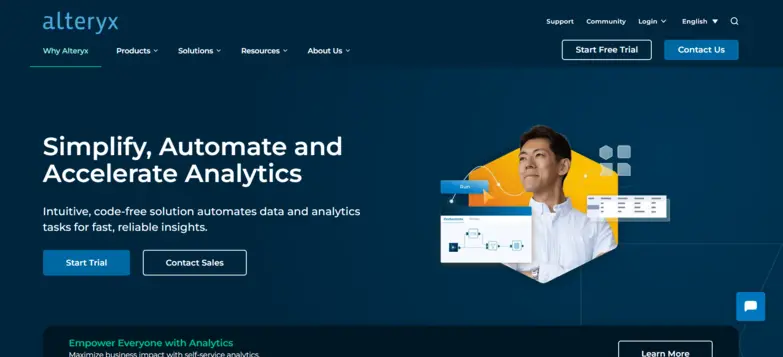
Introduction
Alteryx is a data analytics-based visualization platform that offers an array of products for businesses to analyze data easily. Users may automatically clean, transform, and analyze large datasets from various sources without coding or programming.
With 8300+ delighted customers, 98 G2 Awards, and 400+ partners serving 90 countries, Alteryx is a go-to for many companies. With its low-code and no-code platform and easy drag-and-drop capability, users can say hello to data storytelling. Alteryx is an advanced software with three basic components: gallery, server, and designer. These components enable the collection of data from various sources for the purpose of generating reports. The software maintains a high level of encryption data security, limiting access only to authorized users. The software also collects data from multiple sources and uses scripting tools to convert it into useful information. These are generated utilizing predictive tools based on the data analysis. It supports comprehensive customization, personalization, and file sharing with multiple users.
Key Feature
- Data Transformation and Preparation: Transform and enrich data with deduplication, normalization, and cleansing tools to produce high-quality analysis.
- Drag-and-Drop: It enables workflow creation without the need for deep technical skills.
- Data Blending: This refers to merging many data sets from various sources into a database to improve analysis and generate a single dataset.
- Collaboration: This feature enables teams to share insights, workflows, and analytic apps to use one set of data for tasks.
- Spatial Analytics: Visualization of geography and optimizing logistics are the main ideals.
- Advanced Analytics: This encompasses machine learning, statistical analysis, and predictive modeling.
- Reporting & Visualization: These aid in the integration of products like Power BI and Tableau, enabling the creation of outstanding dashboards.
- Automated Workflows: Repetitive tasks can be automated to increase efficiency and seamless operations.
Pros & Cons
- Increased efficiency
- Multiple data sources support
- Convenient-to-use workflow interface
- Strong integration capabilities
- The license cost is very high
- Desktop application crashes sometimes when loading large-sized data
- Users may require technical expertise to handle advanced features
Pricing
- Designer Cloud: Starting at $4,950 Designer Desktop: $5,195
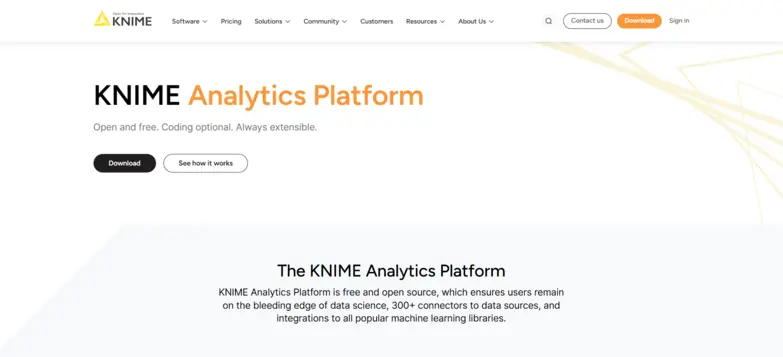
Introduction
KNIME is a robust, open-source data mining tool that enables data professionals to create completely independent apps and services using an intuitive drag-and-drop format.
KNIME can convert multiple data sources, including spreadsheets, flat files, databases, and other standard formats. These will be normalized, analyzed, and configured to produce representations that become interesting visualizations. This data aggregation provides the possibility to create simple visualizations that are easier to understand. Direct marketers can thus incorporate it into their marketing technology framework, allowing them to successfully work with the large volumes of data that accompany direct marketing campaigns. It includes a variety of data visualization solutions for developing larger applications within its environment, but with some effort, it can produce outstanding dashboards for evaluating direct marketing data. If you’re curious about which platform offers better tools for direct marketing data, see our full comparison of KNIME vs Polymer.
Key Feature
- Nodes System: Each node in the nodes system corresponds to a specific function, such as reading data, normalizing, or converting. There are drag-and-drop nodes to help with process creation for data mining, data preparation, and information generation.
- Dashboard: There is no KNIME native dashboard. It enables the creation of custom dashboards using nodes, while also sharing and automating features such as scheduled reporting and email alerts in formats like PDF.
- Trend Indicators: It is also feasible to develop a visualization, such as a line plot, to examine trends through fast data processing and display.
- Interactive Reporting: These are interactive charts, such as sunburst charts, through which dynamic data exploration can be done. When combined with the KNIME Server, it enhances its reporting effectiveness.
- Geolocation: Geo-mapping with APIs from OpenStreetMap can help visualize the points where all data is in place for marketing purposes.
- Predictive Tools: Forecasting with graph outputs via predictive analytics nodes can also help predict how the campaign will perform in terms of responses.
Pros & Cons
- Easy import and export of workflows
- Offers a wide range of functionalities
- Free, open-source platform
- Provides well-defined APIs for plugin extensions
- Takes time to understand the functionalities and user interface
- The program consumes a lot of memory
Pricing
- Basic: $39,900 Yearly
- Standard: $71,250 Yearly
- Team plan: $99 Monthly
Quick Guide On AI-Powered Data Analytics Tools
What is AI Data Analysis?
The term AI data analytics describes the utilization of artificial intelligence methodologies in analyzing and processing data. It automates previously manual tasks like identifying patterns, trends, and correlations among datasets.
AI is transforming traditional data analysis, with the result that it is now faster, less prone to human errors, and provides more accurate data insights. Organizations could extract actionable knowledge from enormous amounts of data with the efficient empowerment of AI. Thus, AI-powered solutions gain an edge by always learning from data, adapting themselves to new information, and providing analytical depth like never before
How Can AI Enhance Data Analysis for Businesses?
Advanced AI-powered data analytics solutions possess the analytical capability to not only process data but also extract insights from it. This, in turn, improves decision-making, boosts efficiency, and provides a platform for personalizing services to specific business needs, fostering innovation and agility in a competitive marketplace.
Real-Time Insight and Monitoring
By choosing the right AI data analytics tool, businesses can gain instant insights and respond swiftly to market shifts or operational issues. For example, real-time analytics can sense anomalies in production lines, enabling prompt resolution and less downtime. It enables proactive decision-making, such as modifications in marketing campaigns based on quick feedback or the mitigation of cyber threats as soon as they appear, because it can handle streaming data in real time.
Improved Forecasting and Predictive Analytics
Natural Language Processing (NLP) Integration
The role of Natural Language Processing in data analytics is becoming increasingly significant as AI applications utilizing NLP transform complex and non-trivial datasets into easy-to-understand language for individuals without technical knowledge. It also facilitates the accessible communication of data within the organization. When integrated with NLP applications, analytics and physical narratives can transform into actionable tales, bridging the gap between data science teams and decision-makers.
Sustainability and Resource Optimization
AI-based analytics optimizes resource usage to a substantial extent and thus contributes significantly to sustainability goals set by the business or industries. For instance, the AI-powered tool analyzes the pattern of energy consumption and provides actions to generate savings and reduce the footprint due to process improvement. Agriculture uses AI for the optimization of water usage, and transportation uses it for fuel consumption minimization associated with operational efficiencies but without compromising environmental responsibility.
How Do AI Tools for Data Analytics Work?
AI in data analysis performs the function of automating every stage of a data analysis process, including the collection of data, processing it, and interpreting it. The tools capture the collective action of learning models in pattern finding and trend-making while the deep learning algorithms come with advanced predictive functionalities.
Here are the procedures involved in using AI to analyze data.
- Data Collection: Data collected from a variety of sources, both structured and unstructured. The AI systems use databases, APIs, IoT devices, and web scraping to integrate all input data.
- Data Preprocessing: Data preparation entails cleaning, normalizing, and organizing the information for analysis. The process of data cleaning and analysis typically includes issues with redundancy and missing values, as well as data quality concerns.
- Model Application: Uses pre-trained AI models or custom-built ones to generate insights. These models use supervised or unsupervised learning, or reinforcement learning, to uncover hidden structured insights.
- Visualization: This method presents the findings through easily understandable dashboards and reports. Visualization elements could range from charts and heat maps to 3D images.
Factors to Consider While Choosing the Best AI Data Analytics Tool
Data Handling Capabilities
AI and Machine Learning Capabilities
Visualization and Reporting Features
A visualization tool should include interactive and flexible dashboards that allow extensive exploration of the data. It must have the ability to read most common file formats and support third-party tools to ensure compatibility and facilitate data sharing. You should know some of the key visualization features to consider in analytics tools when assessing their effectiveness and usability.
Key Features to Look for in AI Data Analytics Tools
These are the essential features you should look for when choosing AI data analyst tools:
- Scalability and performance: An key factor for your organization’s ability to retain performance in the face of increasing data demand.
- Multi-Language Support: It should be compatible with multiple programming languages to allow flexibility in integration.
- Real-Time Analytics: Immediate insights can assist the organization in making actionable decisions regarding issues such as fraud detection or consumer sentiment monitoring.
- Natural Language Processing: When using AI analytics tools, this should streamline engagement and make insights easier to access for diverse teams.
- Collaboration: Collaborate effectively on data projects among teams to spur innovation and productivity.
- Specific Functionality: Customized features for specific industries like healthcare or manufacturing.
- Automated Reporting: Scheduling and automation of reports that supply data at regular intervals.
- Integration with Emerging Technologies: Stay ready for the future by enabling IoT, blockchain, and more for operations.
Benefits of Using AI-Powered Tools for Data Analytics
Adopting data analysis AI tools offer numerous benefits, including the following ones:
Time-Saving
Automating routine tasks that are repetitive allows for less time to be spent on data preparation and analysis, thereby freeing up more time for strategic initiatives.
Better Decision-Making
Using accurate data-driven insights to make informed and strategic business decisions is the path of growth and innovation.
Cost-Effectiveness
AI tools minimize resource wastage by optimizing a lot of operations and processes, thus leading to huge reductions in costs.
Accuracy
AI removes human errors and can guarantee precision in data analysis, creating trust in the data-driven insights produced by these tools.
Better Data Management
These tools allow data to be received and stored in an organized and safe manner, which improves data quality across the board and helps improve compliance.
Future of AI-Powered Data Analysis Tools
Emerging trends in the field of artificial intelligence software for analyses are now readily apparent, ranging from expanded business opportunities to various promising capabilities. The advancement of Explainable AI (XAI) promises to make the AI’s decision-making process increasingly transparent for people. As these innovations evolve, many are beginning to ask: Will AI replace data analysts? While AI is creating some of the best tools for data analysts and ensuring future-proof connectivity, it is more likely to augment human roles rather than eliminate them—delivering unmatched scalability and efficiency. The field will grow into a necessary industry for use all over the world.
Conclusion
Emerging technologies in artificial intelligence have transformed how businesses handle data, making previously difficult processes less tedious than they have been. By utilizing advanced features of AI tools for data analytics, such as real-time insights, predictive modeling, and NLP, organizations can fully utilize their data and maintain a competitive edge in dynamic markets.
FAQs
What is the role of NLP in AI data analytics?
NLP simplifies data analysis by transforming complex datasets into natural language summaries that provide accessible insights for all users.
How can AI help you analyze data?
AI automation makes data analysis effortless, as it processes data, discovers patterns within it, and formulates actionable insights.
How can AI tools improve data analysis efficiency?
AI tools improve the efficiency of data analysis by enhancing processing speeds, minimizing errors, and providing real-time insights.
How secure is the data processed by AI analytics tools?
The majority of AI analytics tools employ stringent security protocols, such as encryption and access control, to ensure the privacy and safety of data from exposure and compromise.
- Key Takeaways
- Best AI Data Analysis Tools Explained
- Quick Guide On AI-Powered Data Analytics Tools
- What is AI Data Analysis?
- How Can AI Enhance Data Analysis for Businesses?
- How Do AI Tools for Data Analytics Work?
- Factors to Consider While Choosing the Best AI Data Analytics Tool
- Key Features to Look for in AI Data Analytics Tools
- Benefits of Using AI-Powered Tools for Data Analytics
- Future of AI-Powered Data Analysis Tools
- Conclusion
- FAQs
SHARE
Related Articles


